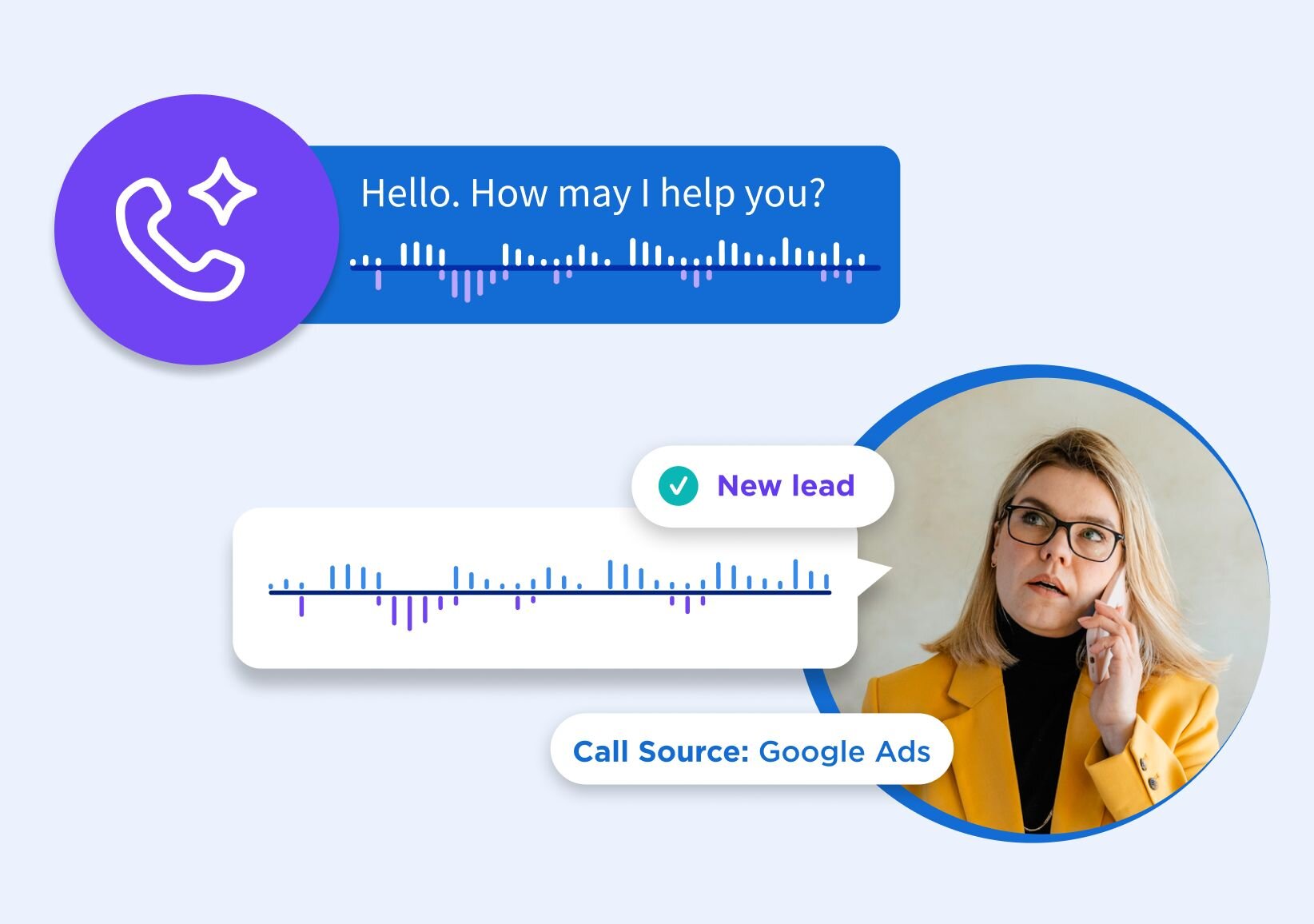Missed calls mean missed opportunities — nearly 30% of business calls go unanswered, and many of those leads never call back. Voice Assist helps close that gap by answering, qualifying, and capturing calls when you can’t.
The real difference lies in how you set it up. Voice Assist is easy to configure with hands-on guidance from our AI Expert Team. Plus, you remain in complete control of when and how it handles your leads. With a few simple adjustments, like refining your greeting and ensuring your business profile is accurate, you can turn more calls into valuable leads.
After analyzing hundreds of real calls, we've uncovered the best practices to help you fine-tune Voice Assist and turn more conversations into conversions.
1. Start strong with your greeting
The first 5–10 seconds of a call are critical. A greeting that feels natural, friendly, and human sets the tone for the entire interaction. In fact, our review of real calls found that success rates rose when the greeting sounded more personal. Callers respond better when they feel like they’re speaking to a real assistant.
✅ What to do:
- Personalize your greeting with a name (e.g., “Hi, this is Ava with Ringo’s Cooling…”).
- Keep it warm, brief, and professional.
- Avoid phrases that sound robotic or rejecting (“I can’t help with that…”) which often lead to hang-ups.
- Test small variations of your greeting to see what resonates most with your callers.
2. Design around caller intent
Not every caller is looking for the same thing — and those needs often vary by industry. Automotive shops, for example, tend to field lots of questions about services and pricing, while dental practices are more likely to get calls about booking appointments. Legal firms may need to gather case details before deciding whether to move forward.
The more you anticipate what your callers are likely to ask, the smoother the interaction will be. Voice Assist makes this easy by pulling from your business profile to answer FAQs and capture lead details. All you need to do is tailor the setup to match the most common questions your callers ask.
✅ What to do:
- Keep your business profile up to date to ensure the most common questions always get answered. It auto-fills using data from your website and call history—but don’t forget to review and add anything it might have missed.
- Cater your caller intake questions to your business. Choose from pre-set options or create your own to capture exactly what is important to your business. Remember: Different industries get different types of calls — tailor yours accordingly.
- Take a closer look at the most common reasons customers reach out to your business. Pro tip: You can easily find this valuable information in your multi-conversation insights report!
3. Make the experience simple and frustration-free
Nothing derails a call faster than small frustrations. Over-focusing on details like unusual name spellings or adding extra steps can annoy customers and lead to drop-offs. The smoother the conversation flows, the more likely you are to capture the lead.
✅ What to do:
- Prompt the Voice Assistant to focus on customer experience over accuracy — this can be important for things like name spelling.
- Avoid unnecessary steps or over-complicating the interaction with too many menu steps.
- Keep it simple. Limit your caller intake questions to what you actually need.
4. Keep your business profile accurate
Voice Assist can only be as accurate as the information it has. If your hours, services, or business details are out of date, callers will get inaccurate answers — and that can cost you trust. The better your online presence, the stronger your Voice Assist performance.
Updating your profile in Voice Assist is straightforward, so keeping details current is easy to work into your routine.
✅ What to do:
- Double-check your online listings for consistency.
- Ensure your website is a clear reflection of your business, after all your business profile is initially generated off whatever is on your website.
- Regularly update your business profile with updated information.
5. Prepare for appointment requests
Many callers pick up the phone with one goal in mind: booking an appointment. Voice Assist makes scheduling easier by capturing all the key details and sending an automated text to help the caller book quickly, streamlining the process for everyone.
✅ What to do:
- Use Voice Assist’s automated text follow-up to send a booking link to complete scheduling.
- Keep your team’s calendar organized internally so it’s easy to confirm openings.
- Decide on a clear handoff process for when a booking requires direct interaction with your staff.
6. Know when to step in
Voice Assist is excellent for FAQs, lead capture, and answering the phone. But some situations still call for a live person — like high-value clients, complex inquiries, or customers who insist on speaking with a person.
With built-in transfer settings, Voice Assist makes it easy to hand off calls to your team when needed, so customers get the best of both worlds.
✅ What to do:
- Identify which type of calls should go straight to your team.
- Make sure call transfer settings are in place so Voice Assist can pass calls when needed.
- Train your staff to pick up where the AI leaves off.
Final takeaway
Voice Assist takes the heavy lifting out of call handling, so putting these best practices into action is simple. With an easy way to customize your greeting, keep your business details current, capture lead info, and follow up automatically, you don’t have to overthink it — just set it up and let it work for you. The result? Smoother calls, happier customers, and more leads converted without adding extra work to your plate.
Learn more about Voice Assist









